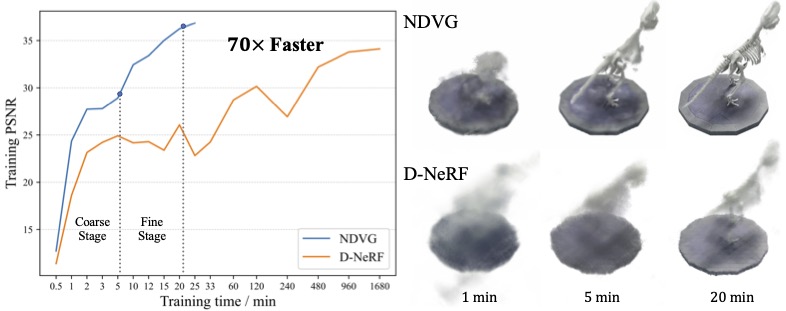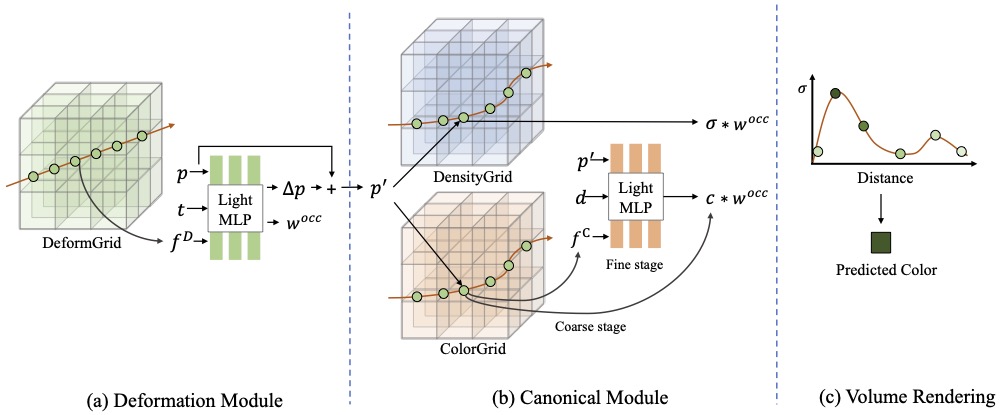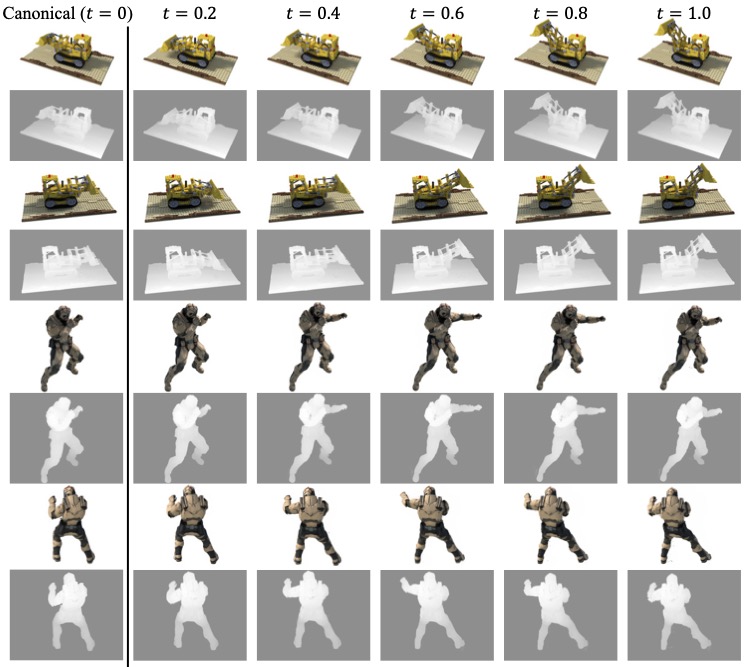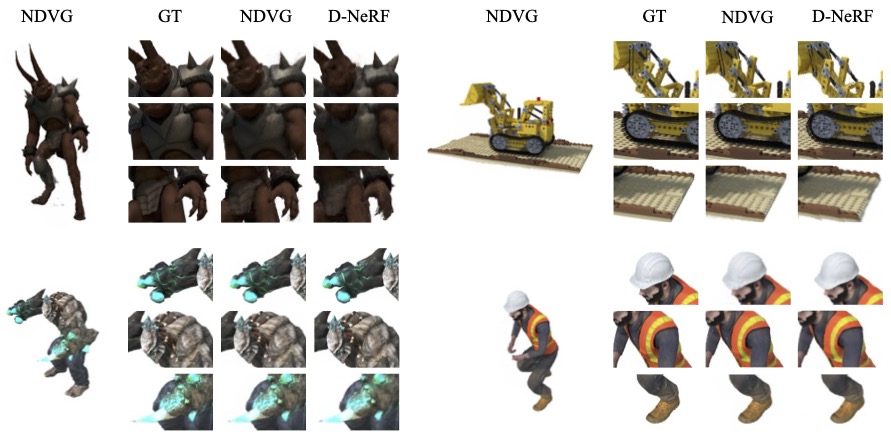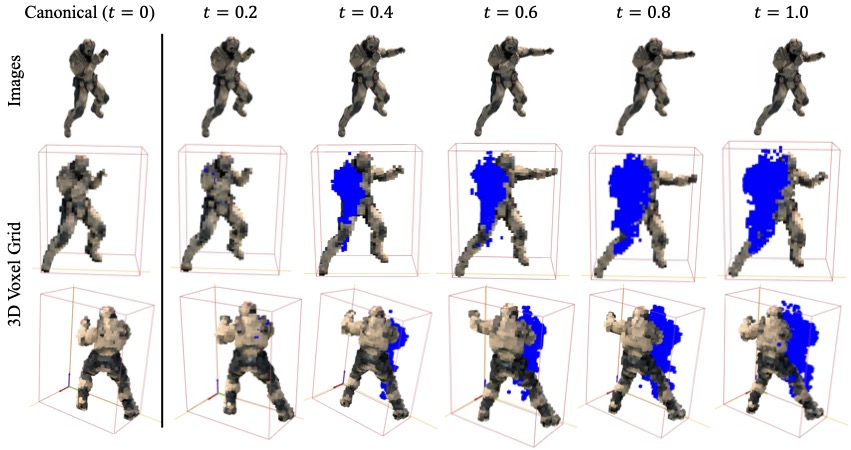Abstract
Recently, Neural Radiance Fields (NeRF) is revolutionizing
the task of novel view synthesis (NVS) for its superior performance.
However, NeRF and its variants generally require a lengthy per-scene
training procedure, where a multi-layer perceptron (MLP) is fitted to the
captured images. To remedy the challenge, the voxel-grid representation
has been proposed to significantly speed up the training. However, these
existing methods can only deal with static scenes. How to develop an
efficient and accurate dynamic view synthesis method remains an open
problem. Extending the methods for static scenes to dynamic scenes is
not straightforward as both the scene geometry and appearance change
over time. In this paper, built on top of the recent advances in voxel-
grid optimization, we propose a fast deformable radiance field method to
handle dynamic scenes. Our method consists of two modules. The first
module adopts a deformation grid to store 3D dynamic features, and a
light-weight MLP for decoding the deformation that maps a 3D point in
observation space to the canonical space using the interpolated features.
The second module contains a density and a color grid to model the
geometry and density of the scene. The occlusion is explicitly modeled
to further improve the rendering quality. Experimental results show that
our method achieves comparable performance to D-NeRF using only 20
minutes for training, which is more than 70× faster than D-NeRF, clearly
demonstrating the efficiency of our proposed method.
